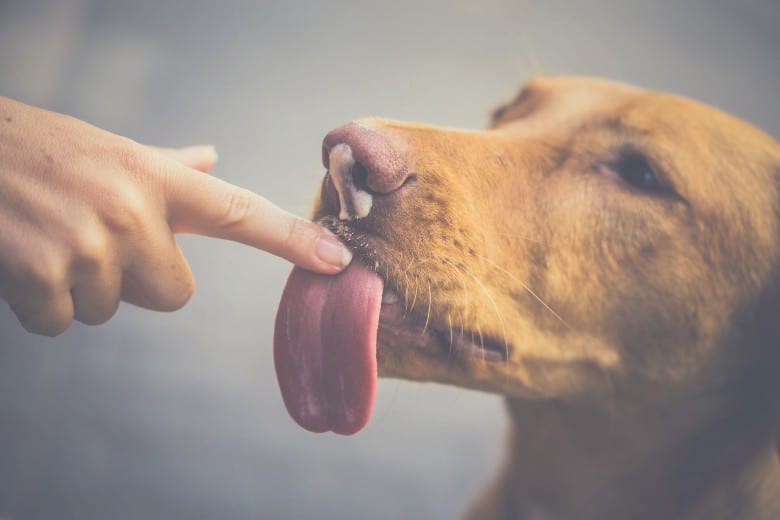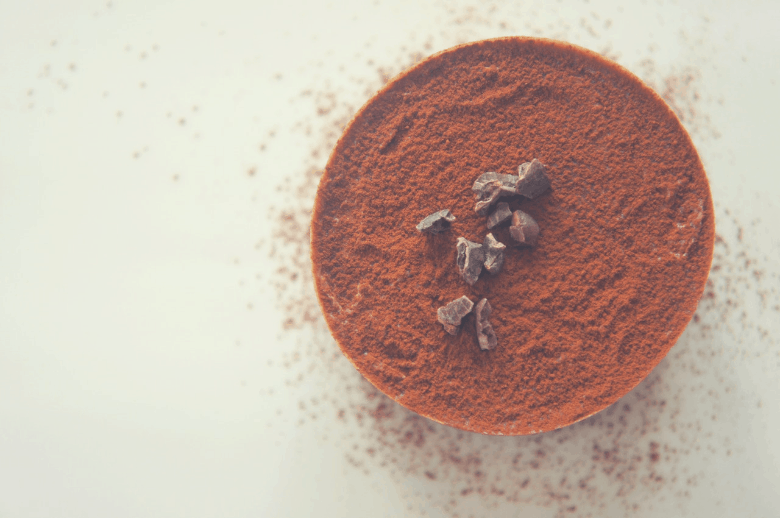We have had several dogs since I was a small child. Initially, we were pretty inexperienced as to what dogs should and should not eat. However, our vet drew our attention to one thing. Under no circumstances should chocolate be given to our puppy. Then I didn’t look into why this is. I accepted, and have never given our dogs food containing chocolate.
I know more about the subject today. Chocolate is toxic to dogs. It can cause quite serious problems, depending on how much of it is eaten and what size and weight dogs are they.
In my article, I write about how much chocolate is toxic, and which types of chocolate are the most toxic. In addition, I write about what the signs are if your dog has eaten too much of this sweet. There will be other interesting and useful advice, so feel free to read on.
By the way, I have another article about foods that are forbidden to give to your dog. If you are interested, feel free to check it.


Finding the best diet for your dog is not easy. You have to consider several aspects, e.g., activity, breed, age, health condition, etc. If you want to make the best decision possible, check out my comprehensive guide on how to choose the best dog food.
Why is chocolate so harmful to dogs?
Chocolate contains caffeine and theobromine. These substances are known as methylxanthines. Both are powerful stimulants that accelerate the heart rate of dogs and affect the nervous system. The Merck/Merial Manual for Veterinary Health has written about this before.
Theobromine is used in humans as a heart stimulant and muscle relaxant. It also has a diuretic and vasodilating effect. However, unlike humans, dogs process this material extremely poorly.
The risk of your dog getting sick depends on a number of factors. Examples of such factors are the type and amount of chocolate consumed, and the dog’s weight. This program can help you calculate the danger of the situation.
These toxic ingredients occur in different amounts in different types of chocolate. Generally speaking, the most dangerous is the one that contains the most cocoa. Because of this, pure cocoa powder is much more dangerous than milk chocolate. Later, I will enclose a table of the caffeine and theobromine content of different foods.
How much chocolate can your dog eat?
The wisest thing to do is to prevent dogs from eating even a little chocolate. And if something goes wrong, call your vet right away. Knowing what kind of chocolate and how much your puppy ate will help you and your vet realize how dangerous the situation is.
It can generally be said that the symptoms of chocolate poisoning already occur when dogs consume 20 mg of methylxanthines per kilogram of body weight. Cardiac symptoms occur at 40-50 mg/kg and seizures occur above 60 mg/kg.
According to the calculations, this means that 3.5g/kg of dark chocolate and 14g/kg of milk chocolate are already dangerous doses. A slice of chocolate cake does not yet contain a lethal amount of harmful substances. However, you should never give chocolate foods to your dog.

Caffeine and Theobromine content of popular sweets
I have collected some sweets in the spreadsheet below. You will be able to see how much of the two toxic substances they contain.
| Common sweets | Serving | Theobromine | Caffeine |
| Ice Cream Rich Chocolate | 148g | 178mg | 5.9mg |
| Peanut M&M’s | 170g | 184mg | 17mg |
| Chocolate Pudding | 108g | 75.6mg | 2.2mg |
| Hershey’s Milk Chocolate Bar | 43g | 64mg | 9mg |
| Hershey’s Chocolate Syrup | 39g | 64mg | 5mg |
| Hershey’s KISSES | 41g | 61mg | 9mg |
| Hershey’s Semi-Sweet Baking Bar | 15g | 55mg | 7mg |
| Cookies, brownies, commercially prepared | 56g | 43.7mg | 1.1mg |
| KIT KAT Wafer Bar | 42g | 48.7mg | 5.9mg |
| REESE’S Peanut Butter Cups (2pk) | 45g | 32.4mg | 3.2mg |
| Doughnut, cake-type, chocolate, sugared or glazed | 43g | 12.6mg | 0.6mg |
| Chocolate Chip Cookies, made with margarine | 16g | 20.3mg | 2.6mg |
| Milky Way | 58g | 37.1mg | 3.5mg |
| Generic Hot Fudge Sundae Topping | 158g | 77.4mg | 1.6mg |
| REESE’S PIECES Candy | 46g | 0mg | 0mg |
The following foods contain the most theobromine:
| Cocoa, dry powder, unsweetened, processed with alkali | 86g | 2266mg | 67.1mg |
| Baking chocolate, unsweetened, squares | 132g | 1712mg | 106mg |
| Cocoa, dry powder, unsweetened | 86g | 1769mg | 198mg |
| Baking chocolate, unsweetened, liquid | 28g | 447mg | 13.2mg |
| Puddings, chocolate flavor, low calorie, regular, dry mix | 40g | 238mg | 7.2mg |
| Desserts, rennin, chocolate, dry mix | 57g | 242mg | 7.4mg |
| Puddings, chocolate flavor, low calorie, instant, dry mix | 40g | 189mg | 5.6mg |
| Syrups, chocolate, HERSHEY’S Genuine Chocolate Flavored | 35g | 68.3mg | 2.1mg |
| Cocoa, dry powder, hi-fat or breakfast, processed with alkali | 28g | 685mg | 20.2mg |
| Candies, chocolate, dark, 70-85% cacao solids | 101g | 810mg | 80.8mg |
| Cocoa, dry powder, hi-fat or breakfast, plain | 5g | 92.6mg | 10.3mg |
What are the symptoms of chocolate poisoning?
Signs of chocolate poisoning do not appear immediately. Usually the dogs will be ill after 6-12 hours. Symptoms can last up to 3 days. These can occur:
- Vomiting
- Diarrhea
- Restlessness
- Increased urination
- Painful belly
- Fast breathing
- Fever
- Tremors
- Abnormal heart rate
- Seizures
- Collapse and death
Please note that old or heart-case dogs are more likely to have more serious symptoms.

What should you do if your dog has eaten chocolate?
First, the sooner you notice that, the better. Call your vet or Pet Poison Helpline. They will be able to give advice. Be sure to be prepared to tell them about your dog’s breed, size, and the type and amount of consumed chocolate. The advice will usually be to monitor your dog. Watch for any of the above symptoms and call them back if your dog’s condition worsens.
If your dog consumed chocolate less than two hours ago, the situation may be different. In this case, you may need to go to the clinic. Your dog will still be able to vomit most of the chocolate. And a few doses of activated charcoal absorbs the remaining toxins from the dog’s body.
In severe cases, veterinary intervention is required. There are medications or IV fluids that can resolve the effects of the poisoning. In such severe cases, they can keep your dog in the clinic all night.
Related Dog Nutrition Guides:
How to prevent it?
We saw what to do if the trouble happened. But the wisest thing to do is prevention. Here are some tips on this.
Hide it
Put all chocolate and cocoa-containing food in the right place. Such a place can be, for example, a closet or a high shelf. The point is, your dog can’t reach it.
Make your children and guests aware not to give the dog chocolate as a treat. Don’t leave it on the table, even by accident. If you go with the family for a while and the dog is left alone at home, check this before you leave.
During the holidays, such as Christmas or Halloween, even more chocolate can be scattered all over the home. Make sure your dog doesn’t find these little, dangerous delicacies.
Teach your dog “leave it”
This command is very easy to teach and very effective. It can come in handy if you accidentally drop a piece of chocolate and your dog finds it.
Crate training
Although I’m not a big fan of this solution, sometimes it can be helpful. If you just can’t supervise him or her, this is the surest way to keep your dog from eating anything dangerous. Be careful to choose a cage that is sturdy and large enough. Make it homey, put in your puppy’s favorite toys and blanket.

Summary
It’s a good idea to sometimes reward your dog with some delicious snacks. Yet, there are treats specifically for this purpose. If you have a large dog, a little chocolate won’t be a big problem. However, if you want the best for him, minimize the risk. If you follow the instructions in my article, you can keep your favorite canine healthy.

